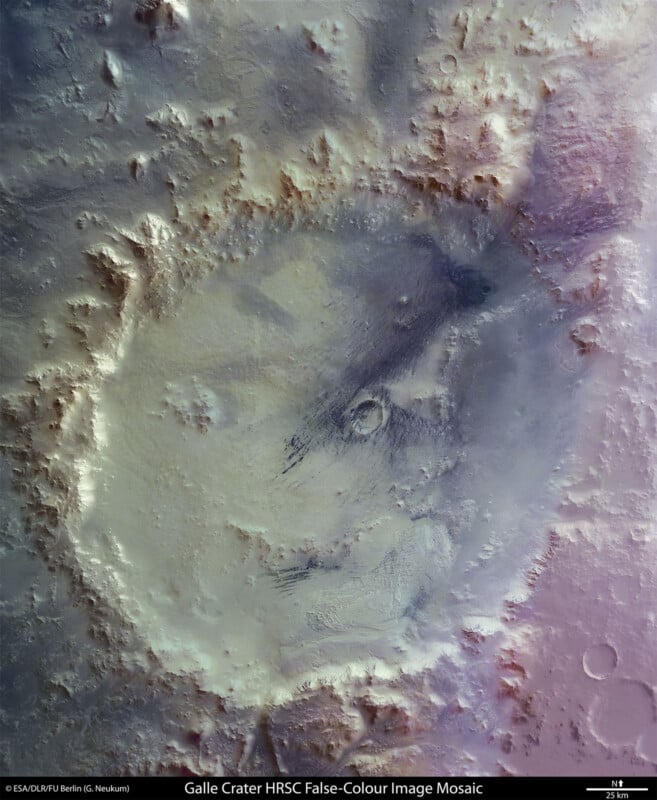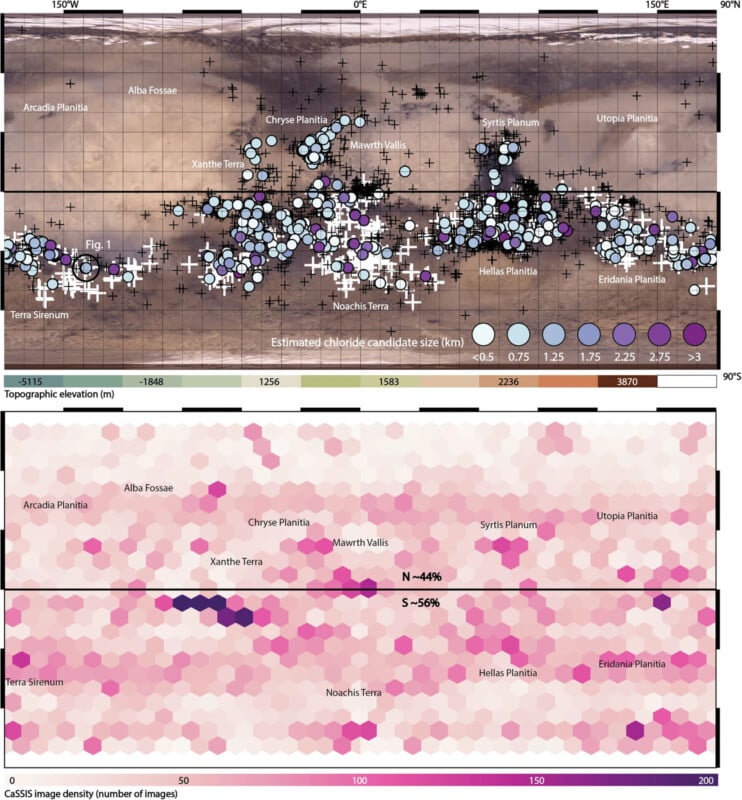
Despite being harsh and inhospitable, Mars has a surprisingly cheery disposition. Scientists have located a “smiley face” on the Martian surface as part of a new study of the Red Planet’s surface.
The smiley face-like structure, which as Space reports is only visible in specific situations, is the remains of an ancient Martian lake that scientists believe dried up billions of years ago.
“Once a world of rivers, lakes, and possibly oceans, Mars now reveals its secrets through chloride salt deposits found by our ExoMars Trace Gas Orbiter,” explains the European Space Agency (ESA) on Instagram. “These deposits, remnants of ancient water bodies, could indicate habitable zones from billions of years ago.”
“The discovery of nearly a thousand potential sites offers new insights into Mars’ climate and potential for past life.”
![]()
![]()
In space since 2016, the ExoMars Trace Gas Orbiter is a joint mission between the ESA and Roscosmos. The mission’s primary objective is to “gain a better understanding of methane and other atmospheric gases that are present in small concentrations (less than 1% of the atmosphere) but nevertheless could be evidence for possible biological or geological activity.”

The new ancient smiley face is not the first the ESA has imaged on the Martian surface. Crater Galle, named for the German astronomer J.G. Galle (1812-1910) is informally called the “happy face” crater, and was first seen by NASA’s Viking Orbiter 1 mission. The ESA’s High-Resolution Stereo Camera (HRSC) aboard the Mars Express spacecraft took a detailed look at the crater in 2006.

The new smiling face deposit is detailed in research published in Nature‘s Scientific Data journal last month.

“Chloride deposits are markers for early Mars’ aqueous past, with important implications for our understanding of the martian climate and habitability,” the researchers explain. “The Color and Stereo Surface Imaging System (CaSSIS) onboard ESA’s Trace Gas Orbiter provides high-resolution color-infrared images, enabling a planet-wide search for (small) potentially chloride-bearing deposits.”
Image credits: ESA/TGO/CaSSIS
